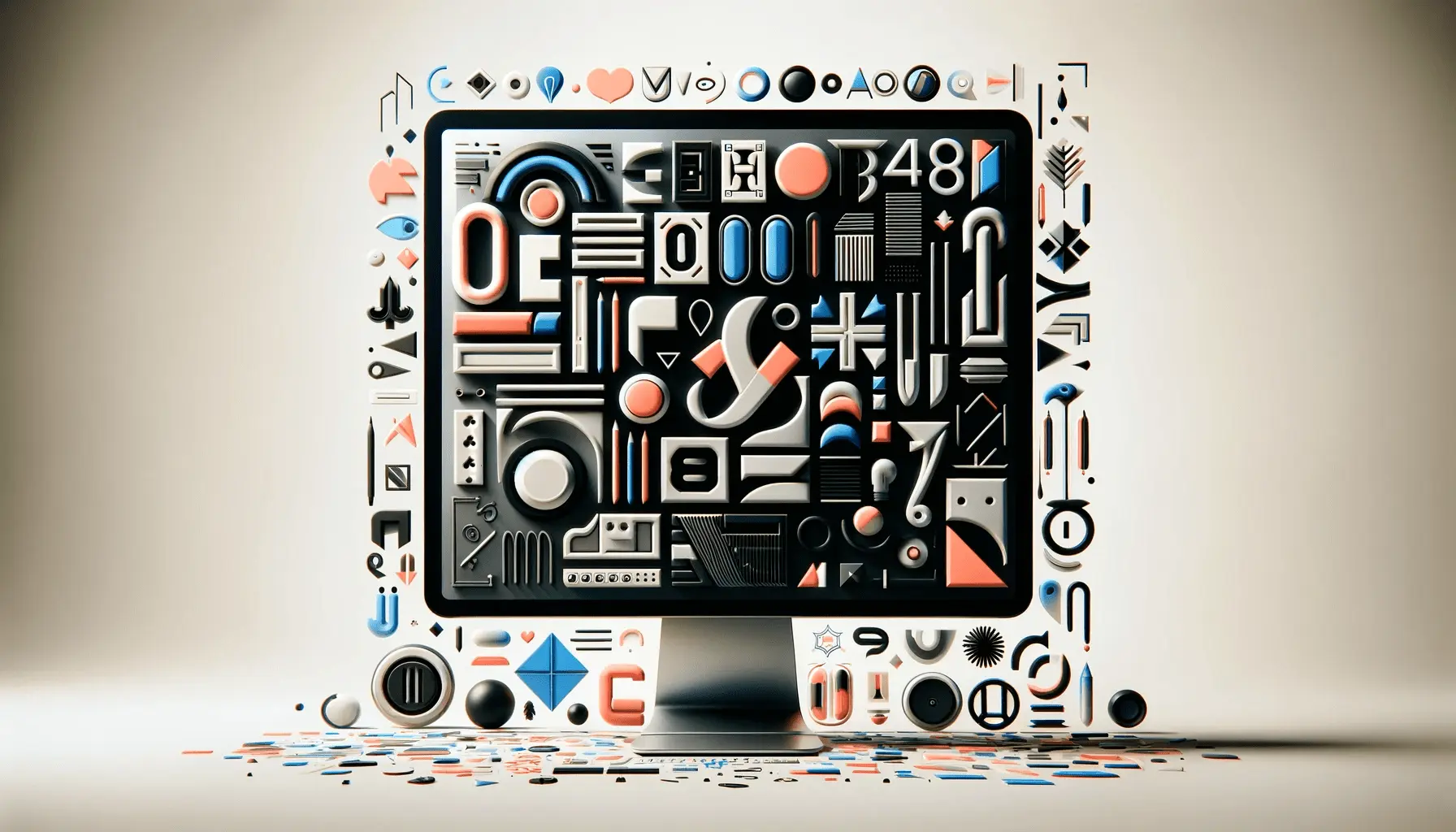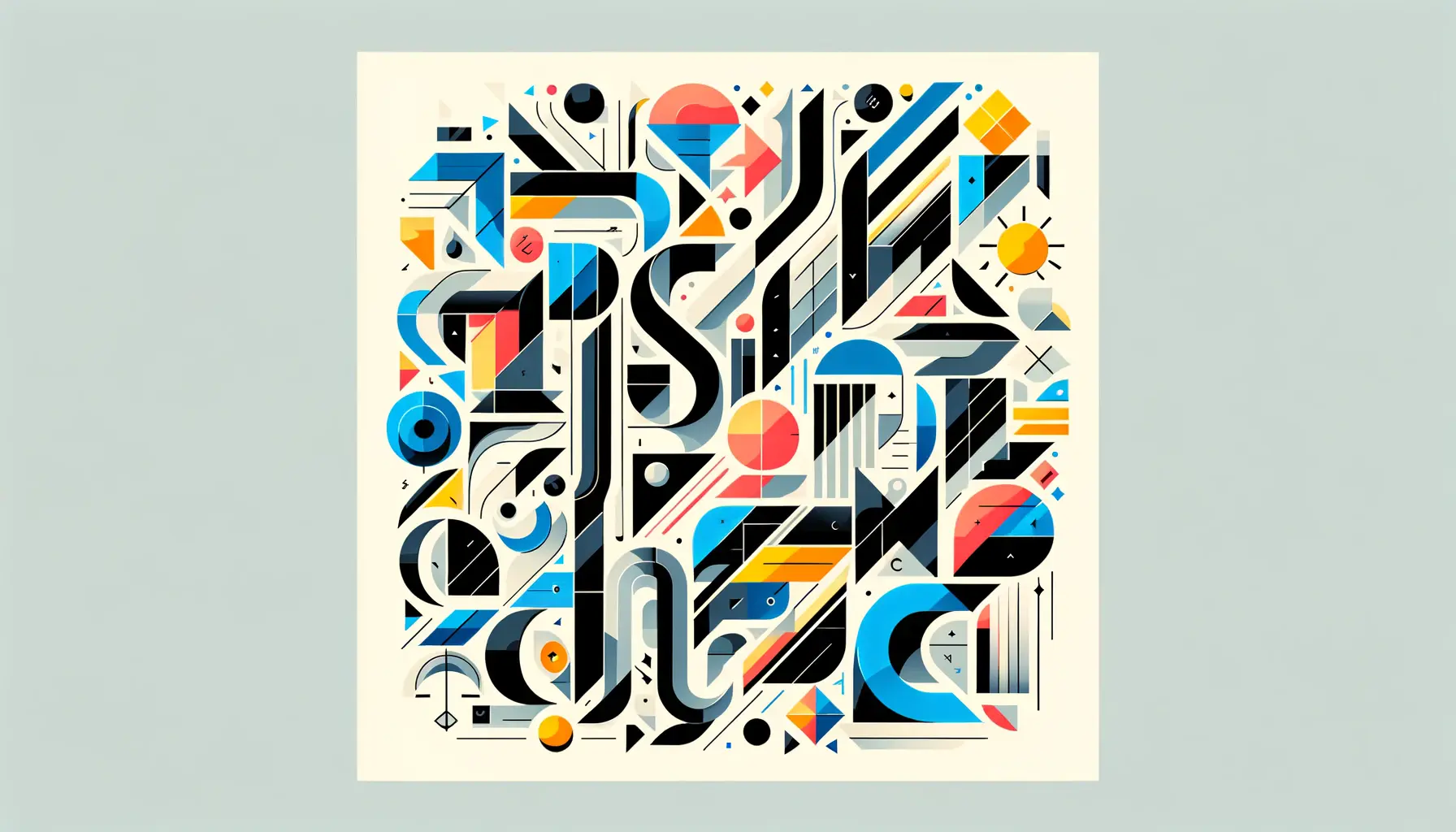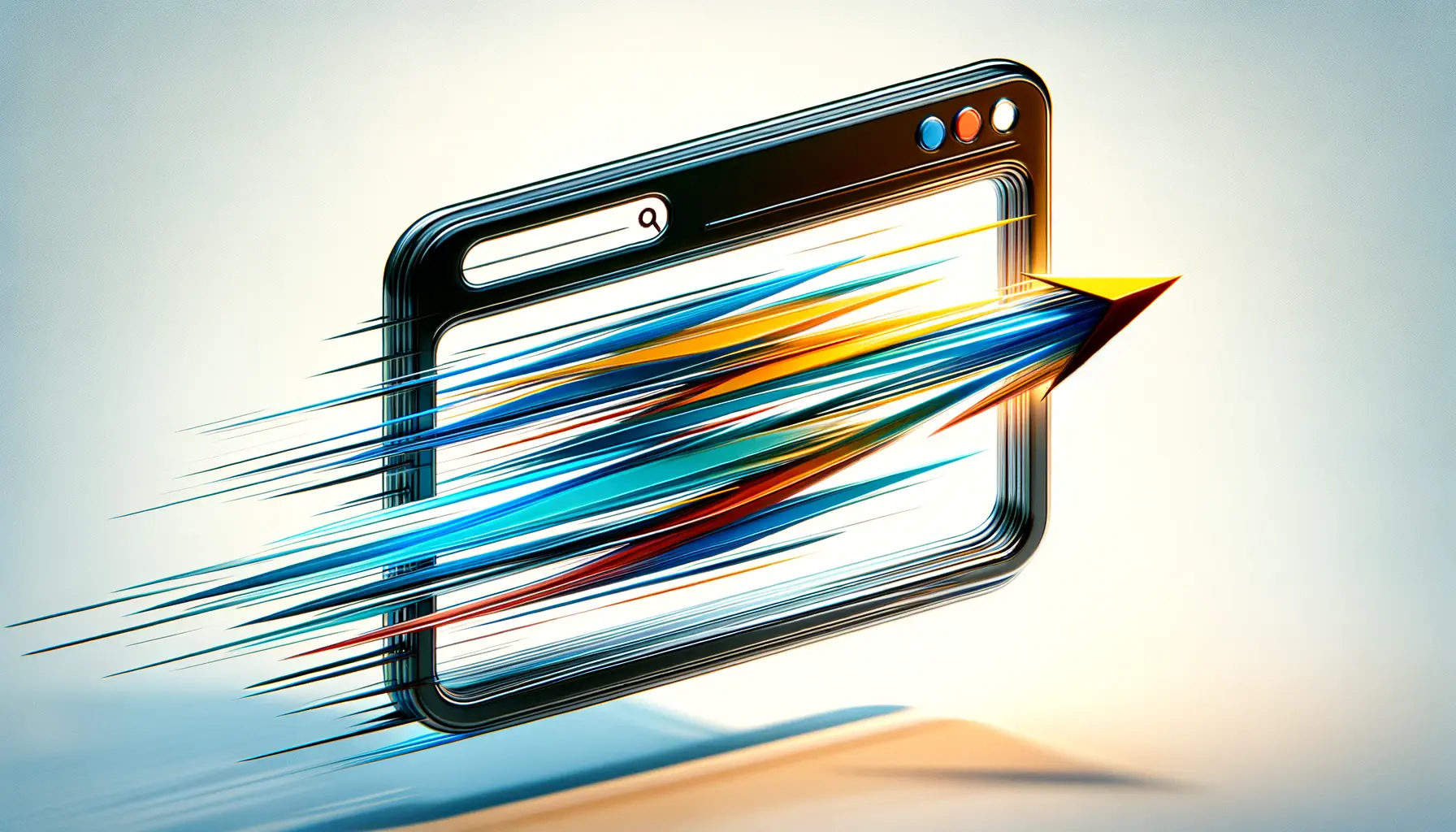The world of typography is ever-evolving, with designers and typographers constantly pushing the boundaries of what’s possible with text.
As we look towards 2025, the typography trend landscape is poised for another seismic shift, influenced by technological advancements, cultural shifts, and the relentless pursuit of creativity.
This article delves into the anticipated trends that will shape the typography world in 2025, offering insights into the future of type design and how it will continue to influence communication, branding, and digital experiences.
Typography, at its core, is more than just selecting fonts and adjusting sizes; it’s an art form that communicates mood, tone, and personality.
The right typography can elevate a message, making it more engaging and impactful.
As we move closer to 2025, the integration of technology and design, along with a deeper understanding of user engagement, will significantly influence typography trends.
This exploration into the future of typography trends is not just a forecast but a guide to what might become the next big thing in the design world.
- The Rise of Multidimensional Typography
- Embracing the Authenticity of Handwritten Styles
- Embracing the Authenticity of Handwritten Styles
- Maximalism: A Bold Statement in Typography
- Typography in Motion: The Dynamic Future of Type
- Typography and Accessibility: Designing for All
- Exploring the Intersection of Typography and Sustainability
- Envisioning the Future of Typography Trends for 2025
- FAQs: Predicting the Next Big Typography Trend for 2025
The Rise of Multidimensional Typography
3D Typography and Its Impact
One of the most exciting developments in typography is the shift towards three-dimensional (3D) designs.
This trend, which has been gaining momentum, is expected to dominate by 2025.
3D typography adds depth and a sense of realism to digital and print designs, offering a new layer of engagement for the audience.
With advancements in graphic design software and augmented reality (AR) technologies, designers are now able to create complex, multidimensional typographic artworks that were once thought impossible.
The appeal of 3D typography lies in its ability to stand out in a crowded digital landscape.
It captures the viewer’s attention, making messages more memorable.
This trend is particularly effective in advertising, branding, and web design, where differentiation is key.
As screen resolutions improve and AR becomes more mainstream, expect to see 3D typography that not only looks realistic but also interacts with the viewer in innovative ways.
3D typography is transforming digital and print media, offering an immersive experience that engages audiences like never before.
Integrating Typography with AR and VR
The integration of typography with augmented reality (AR) and virtual reality (VR) is another trend set to redefine the design landscape by 2025.
As AR and VR technologies become more accessible, designers are exploring new ways to incorporate typography into these immersive environments.
This trend is about creating typographic experiences that go beyond the screen, allowing users to interact with text in three-dimensional space.
Imagine walking through a virtual gallery where the descriptions of art pieces are presented in floating 3D letters that you can navigate around, or an AR application where information about a historical site is displayed in typography that blends seamlessly with the real world.
These experiences make information consumption more engaging and interactive, opening up new possibilities for storytelling, education, and marketing.
The fusion of typography with AR and VR is paving the way for innovative design solutions that enhance user engagement through interactive experiences.
Embracing the Authenticity of Handwritten Styles
In the digital age, where sleek sans-serifs and geometric fonts have dominated the scene, there’s a growing nostalgia for the human touch in design.
By 2025, we anticipate a resurgence of handwritten typography styles that evoke warmth, authenticity, and personal connection.
This trend reflects a broader cultural shift towards valuing individuality and craftsmanship in an increasingly automated world.
Handwritten fonts offer a unique way to convey emotion and personality, making them ideal for brands looking to establish a relatable and down-to-earth identity.
From packaging to digital interfaces, the application of handwritten styles can significantly enhance the user experience by adding a personal touch that stands out in the digital clutter.
Handwritten typography brings a personal and authentic touch to digital and print designs, fostering a deeper connection with the audience.
- The versatility of handwritten fonts allows for a wide range of applications, from casual and playful to elegant and sophisticated.
- Advancements in font technology enable more realistic and varied handwritten styles, making them more accessible to designers.
Case Studies: Handwritten Typography in Action
Several brands have successfully incorporated handwritten typography into their visual identity, demonstrating the trend’s versatility and impact.
For instance, a boutique coffee shop might use a handwritten script for its logo and packaging to convey a sense of warmth and hospitality.
Similarly, a lifestyle blog could employ handwritten fonts in its headers and call-to-actions to create a friendly and inviting online space.
These real-life applications show how handwritten typography can be used to differentiate a brand and create a memorable visual identity.
As we move towards 2025, expect to see more brands embracing this trend to stand out and connect with their audiences on a personal level.
Technological Advancements Supporting Handwritten Typography
The rise of handwritten typography is also supported by technological advancements in font design and digital typography tools.
New software capabilities allow designers to create more nuanced and varied handwritten fonts, capturing the imperfections and character of actual handwriting.
Additionally, digital platforms are increasingly supporting custom fonts, making it easier for brands to incorporate handwritten styles into their digital presence.
As technology continues to evolve, the gap between digital typography and the authentic feel of handwriting narrows, offering designers unprecedented opportunities to explore and innovate within this trend.
Embracing the Authenticity of Handwritten Styles
In the digital age, where sleek sans-serifs and geometric fonts have dominated the scene, there’s a growing nostalgia for the human touch in design.
By 2025, we anticipate a resurgence of handwritten typography styles that evoke warmth, authenticity, and personal connection.
This trend reflects a broader cultural shift towards valuing individuality and craftsmanship in an increasingly automated world.
Handwritten fonts offer a unique way to convey emotion and personality, making them ideal for brands looking to establish a relatable and down-to-earth identity.
From packaging to digital interfaces, the application of handwritten styles can significantly enhance the user experience by adding a personal touch that stands out in the digital clutter.
Handwritten typography brings a personal and authentic touch to digital and print designs, fostering a deeper connection with the audience.
- The versatility of handwritten fonts allows for a wide range of applications, from casual and playful to elegant and sophisticated.
- Advancements in font technology enable more realistic and varied handwritten styles, making them more accessible to designers.
Case Studies: Handwritten Typography in Action
Several brands have successfully incorporated handwritten typography into their visual identity, demonstrating the trend’s versatility and impact.
For instance, a boutique coffee shop might use a handwritten script for its logo and packaging to convey a sense of warmth and hospitality.
Similarly, a lifestyle blog could employ handwritten fonts in its headers and call-to-actions to create a friendly and inviting online space.
These real-life applications show how handwritten typography can be used to differentiate a brand and create a memorable visual identity.
As we move towards 2025, expect to see more brands embracing this trend to stand out and connect with their audiences on a personal level.
Technological Advancements Supporting Handwritten Typography
The rise of handwritten typography is also supported by technological advancements in font design and digital typography tools.
New software capabilities allow designers to create more nuanced and varied handwritten fonts, capturing the imperfections and character of actual handwriting.
Additionally, digital platforms are increasingly supporting custom fonts, making it easier for brands to incorporate handwritten styles into their digital presence.
As technology continues to evolve, the gap between digital typography and the authentic feel of handwriting narrows, offering designers unprecedented opportunities to explore and innovate within this trend.
Maximalism: A Bold Statement in Typography
The pendulum of design trends is swinging towards maximalism, a style characterized by its lavish, bold, and often eclectic approach.
As we approach 2025, maximalism in typography is set to make a significant impact, marking a departure from the minimalist designs that have dominated the past decade.
This trend is not just about being loud; it’s about embracing complexity, richness, and diversity in design.
Maximalist typography combines various elements like contrasting colors, mixed font styles, and intricate backgrounds to create a visually stimulating experience.
It’s a reflection of a broader societal move towards individual expression and away from the uniformity of minimalism.
For brands and designers, maximalism offers a way to stand out, tell a unique story, and engage audiences with something unexpected.
Maximalism in typography is characterized by its use of bold colors, intricate patterns, and an abundance of decorative elements.
- It allows for a more expressive and individualistic approach to design, reflecting the brand’s personality in a crowded market.
- The trend encourages creativity and experimentation, pushing the boundaries of traditional typography.
Implementing Maximalism in Digital and Print Media
Maximalism finds its place both in digital and print media, offering a versatile approach to design.
In digital platforms, maximalist designs can create immersive experiences that captivate users, making websites and apps more memorable.
For print media, maximalism can transform ordinary materials into extraordinary pieces of art, whether it’s through packaging, posters, or editorial design.
The key to successfully implementing maximalism is balance.
While the style encourages extravagance, it’s crucial to maintain readability and coherence in the design.
This often involves careful selection of typefaces, colors, and layout to ensure that the message is not lost in the visual complexity.
Case Study: Maximalism in Branding
A notable example of maximalism in action is the branding for a luxury fashion brand that uses bold, decorative fonts combined with vibrant colors and patterns to convey a sense of opulence and sophistication.
The brand’s use of maximalist typography across its website, packaging, and advertising campaigns creates a cohesive and distinctive identity that captures the essence of luxury and sets it apart from competitors.
This case study illustrates how maximalism, when executed well, can enhance a brand’s visibility and appeal.
As we move towards 2025, more brands are likely to embrace this trend to make bold statements and connect with audiences on a deeper level.
Typography in Motion: The Dynamic Future of Type
The dynamic nature of digital media has paved the way for typography in motion, a trend that’s set to captivate audiences with its fluidity and interactivity.
As we edge closer to 2025, motion typography is emerging as a key player in the design world, offering new ways to engage and communicate with viewers.
This trend leverages animation, video, and interactive elements to bring text to life, making messages more impactful and memorable.
Motion typography transcends static designs, providing a narrative quality that enhances storytelling.
It’s particularly effective in digital advertising, social media, and web design, where capturing the user’s attention quickly is crucial.
By animating text, designers can emphasize key messages, evoke emotions, and create a sense of immersion that static typography cannot achieve.
Motion typography enhances user engagement by adding a temporal dimension to text, making it more dynamic and expressive.
- It offers endless creative possibilities, from subtle text fades and typographic animations to complex sequences that interact with users.
- The trend is not just about aesthetics; it’s a powerful tool for storytelling and communication, making it a valuable asset for brands and content creators.
Integrating Motion Typography in User Interfaces
One of the most exciting applications of motion typography is in user interfaces (UI), where it can significantly improve the user experience.
By animating text in UI elements, designers can guide users through a digital product, highlight important information, and make interactions more intuitive and enjoyable.
For example, animated buttons, headlines, and loading screens can transform a mundane task into an engaging experience.
The key to successful integration lies in subtlety and functionality.
Motion typography should enhance the UI without overwhelming users or detracting from the usability of the product.
This balance ensures that the design remains user-centered, with motion serving to complement the overall experience.
Future Prospects: Typography That Reacts to Users
Looking ahead, the future of motion typography is not just about animation for animation’s sake.
The next frontier involves typography that reacts to user input, adapting and transforming based on interactions.
This could mean text that changes color, size, or form in response to user actions, or typography that integrates with voice commands and augmented reality (AR) environments.
This interactive approach to motion typography opens up new possibilities for personalized and adaptive content, where the text becomes an active participant in the user experience.
As technology continues to evolve, we can expect motion typography to become even more sophisticated, blurring the lines between design, technology, and user interaction.
Typography and Accessibility: Designing for All
As we move towards a more inclusive digital landscape, the importance of accessible typography cannot be overstated.
By 2025, the focus on designing typography that is not only visually appealing but also accessible to all users, including those with disabilities, will become paramount.
Accessible typography ensures that digital content is readable and understandable by people with various visual impairments, learning disabilities, and other challenges.
Designing for accessibility involves careful consideration of font choices, color contrast, spacing, and layout to enhance readability and comprehension.
This trend is a reflection of a broader shift towards empathetic design practices that prioritize user needs and experiences, ensuring that digital spaces are welcoming and accessible to everyone.
Incorporating accessible typography practices benefits all users, not just those with disabilities, by improving overall readability and user experience.
- Accessibility guidelines, such as the Web Content Accessibility Guidelines (WCAG), provide valuable insights into creating typography that meets universal design standards.
- Advancements in technology and design tools are making it easier for designers to test and implement accessible typography in their projects.
Case Study: Accessible Typography in Action
A notable example of accessible typography in action is a government website that underwent a redesign to improve accessibility.
The project focused on selecting fonts that are easy to read on various devices and backgrounds, implementing adequate contrast ratios, and ensuring that text resizing does not compromise the site’s functionality.
As a result, the website saw an increase in engagement from users who previously struggled with the site’s readability.
This case study underscores the impact of accessible typography on user engagement and satisfaction.
As we approach 2025, more organizations are likely to recognize the value of accessibility in design and take steps to make their digital content more inclusive.
Technological Innovations Enhancing Typography Accessibility
The future of accessible typography is also being shaped by technological innovations.
Tools and software that automatically analyze and adjust typography to meet accessibility standards are becoming more prevalent.
Additionally, artificial intelligence (AI) and machine learning (ML) are being leveraged to create adaptive typography systems that can customize text appearance based on user preferences and needs.
These technological advancements promise to make accessible typography easier to implement and more effective, paving the way for a future where digital content is universally accessible.
As designers and developers continue to embrace these tools, the potential for creating inclusive digital experiences that cater to a diverse audience is boundless.
Exploring the Intersection of Typography and Sustainability
In an era where environmental concerns are at the forefront of global discourse, the design community is increasingly focusing on sustainability.
By 2025, the intersection of typography and sustainability is expected to become a critical consideration in design projects.
Sustainable typography involves the mindful selection of typefaces and design practices that minimize environmental impact, such as reducing ink usage in print materials and optimizing digital content for energy efficiency.
This trend is not just about the physical aspects of design, but also about conveying messages of sustainability and environmental responsibility through typographic choices.
Fonts that embody organic forms or are inspired by nature can subtly reinforce a brand’s commitment to environmental stewardship.
Additionally, the use of eco-friendly fonts and materials in packaging and print design can significantly reduce a project’s carbon footprint.
Assuming sustainability and typography are unrelated disciplines overlooks the potential for design to influence perception and promote environmental values.
- Choosing typefaces that require less ink for printing and are legible at smaller sizes can contribute to more sustainable print design practices.
- For digital platforms, optimizing typography for screen readability reduces energy consumption by allowing content to be easily read at lower brightness settings.
Sustainable Typography in Branding
Brands that prioritize sustainability are increasingly using typography to reflect their values.
A case in point is a clothing brand that uses recycled materials in its products and extends this commitment to its branding by using a typeface designed to use less ink.
The brand’s marketing materials, both online and in print, utilize this font to reinforce its dedication to reducing waste and promoting sustainability.
This approach not only enhances the brand’s environmental credentials but also resonates with eco-conscious consumers.
As awareness of sustainability grows, brands that effectively integrate sustainable practices into their typography and overall design strategy are likely to gain a competitive edge.
Future Directions for Sustainable Typography
Looking towards the future, sustainable typography is set to evolve with advancements in technology and materials science.
Innovations such as biodegradable inks and energy-efficient digital displays will offer new opportunities for designers to create work that is both beautiful and beneficial to the planet.
Furthermore, as consumer demand for sustainable products and practices increases, typography that communicates environmental values will become an essential element of brand identity.
The exploration of typography’s role in sustainability is a testament to the design community’s capacity for innovation and responsibility.
By integrating sustainable practices into typographic design, designers can contribute to a more environmentally conscious and responsible design industry.
Envisioning the Future of Typography Trends for 2025
The landscape of typography is undergoing a transformative shift, with emerging trends poised to redefine our interaction with text in the digital age.
As we look towards 2025, it’s clear that the future of typography is not just about aesthetic appeal but about creating more immersive, inclusive, and sustainable design experiences.
The exploration of multidimensional typography, the resurgence of handwritten styles, the bold statements of maximalism, the dynamic engagement of motion typography, the critical importance of accessibility, and the integration of sustainability principles are all indicative of a broader evolution in the design world.
The Role of Technology and Innovation
At the heart of these trends is the role of technology and innovation, which continues to expand the possibilities for typographic design.
From the integration of AR and VR to the development of accessible and sustainable design tools, technology is enabling designers to push the boundaries of what’s possible with typography.
As we move forward, the continued convergence of design and technology will undoubtedly unveil new typographic landscapes that are currently beyond our imagination.
Typography as a Tool for Engagement and Expression
Typography in 2025 will be more than just a means of conveying information; it will be a tool for engagement, expression, and storytelling.
The trends we see emerging are a testament to typography’s power to evoke emotion, capture attention, and communicate brand values.
Whether through the immersive experience of 3D typography, the personal touch of handwritten fonts, or the interactive possibilities of motion typography, the future of typography is set to enrich our digital experiences in unprecedented ways.
- The integration of multidimensional and motion typography will offer new ways to captivate and engage audiences, making digital content more dynamic and immersive.
- Handwritten and maximalist styles will allow for greater expression and individuality in design, reflecting a shift towards more personalized and authentic digital experiences.
- Advancements in accessible and sustainable typography will ensure that digital content is inclusive and environmentally responsible, aligning with broader societal values.
Preparing for the Future
As we anticipate the next big typography trend for 2025, it’s clear that the future of typography is bright and full of potential.
Designers and brands that stay ahead of these trends, embracing innovation and prioritizing user engagement and sustainability, will be well-positioned to lead in the digital landscape.
The evolution of typography is a journey of endless discovery, and the trends of 2025 are just the beginning of what promises to be an exciting chapter in the world of design.
Quality web design is key for a great website! Check out our service page to partner with an expert web design agency.
FAQs: Predicting the Next Big Typography Trend for 2025
As we approach 2025, the typography landscape is brimming with innovation and creativity. Here are some frequently asked questions to shed light on the future of typography trends.
The future of typography in design is dynamic, with a strong emphasis on multidimensional, motion, and accessible typography, enhancing user engagement and inclusivity.
Technology, especially AR, VR, and AI, will significantly impact typography trends by enabling more interactive, personalized, and immersive typographic experiences.
Yes, handwritten typography will gain popularity for its authentic and personal touch, especially in branding and digital content, to connect with audiences on a deeper level.
Absolutely. Thoughtfully designed typography can greatly enhance digital accessibility, making content more readable and understandable for all users, including those with disabilities.
Maximalism plays a pivotal role in future typography trends by embracing bold, elaborate designs that stand out and express uniqueness in a crowded digital landscape.
Sustainable typography will become increasingly important, reflecting a global shift towards environmental responsibility in design choices and practices.
Yes, motion typography is expected to become a standard in digital media, offering dynamic and engaging ways to capture audience attention and convey messages.
Typography trends will significantly influence brand identity by enabling brands to express their personality, values, and message in more creative, impactful, and engaging ways.










